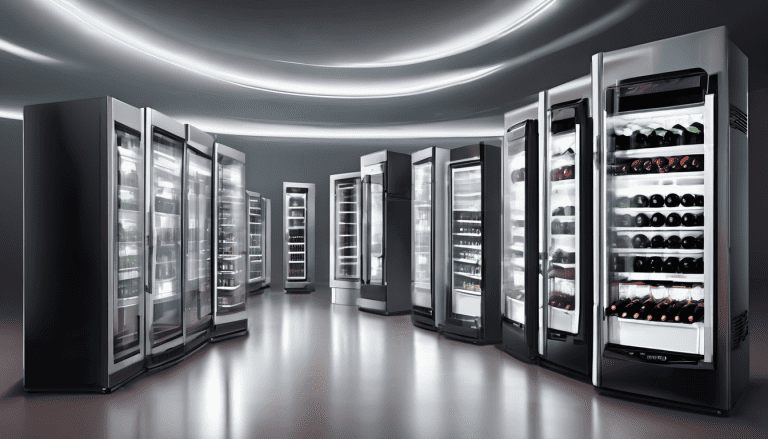As a wine enthusiast with a strong passion for cooking, I’ve spent years perfecting the art of cooking with dry white wine. This ingredient elevates your dishes from good to extraordinary, adding depth, complexity, and a touch of sophistication.
Additionally, boxed wine, such as Black Box Pinot Grigio, is an economical and convenient option for cooking various dishes.
In this guide, I’ll share my expertise on how to use dry white wine for cooking, drawing from personal experience in the kitchen.
Welcome to Didi Somm and Cheers!
Important Notice: The information in this article is for general and public information purposes only. It solely reflects Didi Somm’s or his Staff’s opinion, and no responsibility can be assumed for errors or omissions in the service’s contents. For details, please check the Disclaimer at the bottom of the homepage.
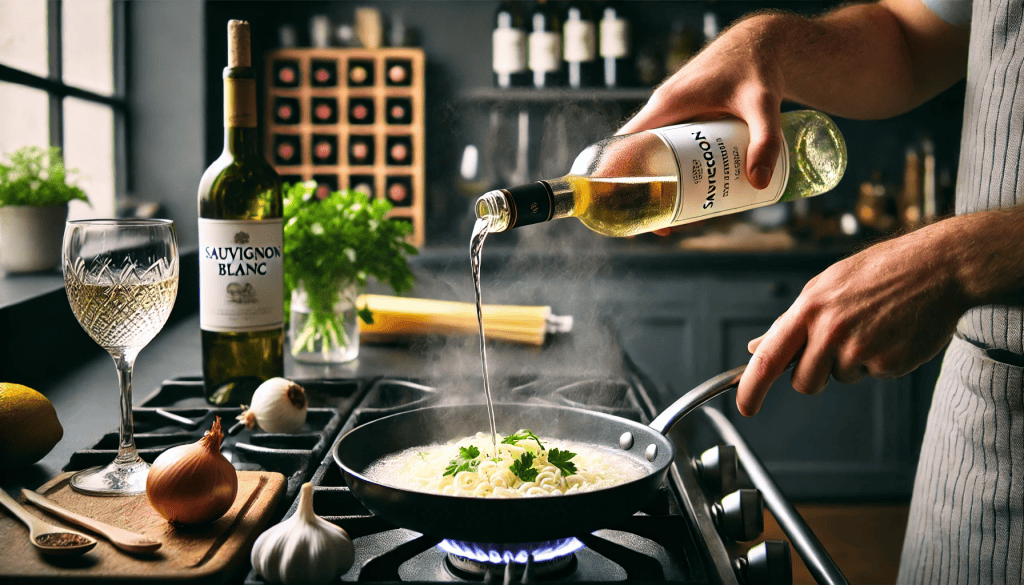
Main Takeaways
Always cook with a wine you’d enjoy drinking.
The alcohol content mostly evaporates during cooking, leaving behind the flavor.
Different dishes call for various types of white wine.
Proper storage of cooking wine is crucial for maintaining quality.
Understanding Dry White Wine
When I first started cooking with wine, I was overwhelmed by the choices. But understanding what makes a white wine “dry” simplified things immensely.
Dry white wine is a white wine that’s not sweet. During fermentation, yeast consumes the grape’s natural sugars, producing a wine with little to no residual sugar. This lack of sweetness makes dry white wines perfect for cooking, as they won’t overpower your dish with unwanted sugary notes.
In my experience, the best dry white wines for cooking have high acidity. This crispness adds a bright, fresh quality to your dishes. My go-to choices include Pinot Grigio, Sauvignon Blanc, and unoaked Chardonnay. It’s essential to use a complex wine that is good quality, not too sweet or oaky, as it significantly impacts the dish’s overall flavor.

Selecting the Right White Wine for Cooking
Choosing the right wine can make or break your dish. I learned this the hard way when I used a sweet Riesling in a savory chicken dish – let’s say it wasn’t my finest culinary moment!
When selecting a white wine for cooking, I always follow these guidelines:
Choose a wine you’d enjoy drinking. If you wouldn’t sip it, don’t cook with it. Drinking wine that you enjoy ensures the flavors will enhance your dish.
Opt for crisp, dry varieties like Sauvignon Blanc or Pinot Grigio.
Avoid heavily oaked wines like some Chardonnays, as they can impart bitter flavors.
Look for wines in the $8-$15 range – no need to break the bank!
Remember, the wine’s flavors will concentrate as it cooks, so choose wisely.
Top White Wines for Cooking
You’ll always find a Sauvignon Blanc and Pinot Grigio bottle in my kitchen. These are my top recommendations for cooking:
Sauvignon Blanc: Its crisp acidity and herbal notes are perfect for seafood dishes and light sauces.
Pinot Grigio: Its subtle flavors make it versatile for various dishes, from risotto to poultry.
Other excellent options include Pinot Blanc, dry Vermouth, and even dry sparkling wines labeled “brut.” Dry wine, such as Pinot Gris, Roussanne, Sherry, and Cabernet Franc, can enhance the flavor of different dishes by adding acidity, building flavor, and deglazing pans.

Techniques for Cooking with Dry White Wine
Now that we’ve covered the selection, let’s discuss the technique. How you use dry white wine for cooking can significantly impact your dish’s final flavor.
I’m typically adding wine at the beginning of the cooking process. This allows the alcohol to evaporate, leaving behind the wine’s essence. For example, I add wine right after toasting the rice when making a risotto. The rice absorbs the wine’s flavors as it cooks, resulting in a beautifully nuanced dish.
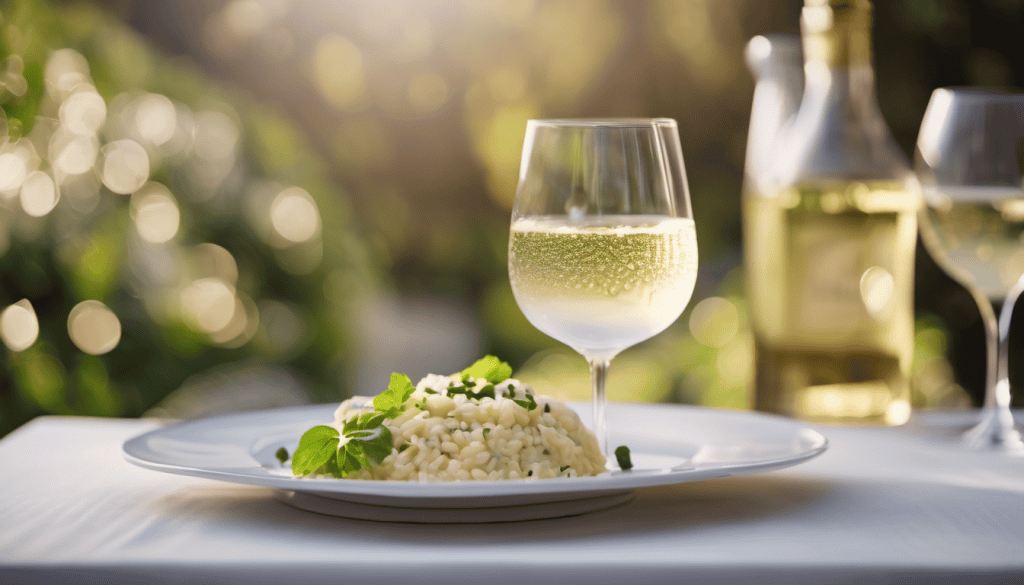
Boxed wine is a versatile and affordable option for deglazing pans and making wine sauces.
White wine is also excellent for deglazing pans. After searing meat or sautéing vegetables, I often add a splash of wine to the hot pan. It helps loosen those flavorful browned bits (what the French call “fond”) stuck to the bottom, incorporating them into your sauce.
How Cooking Affects Alcohol Content
A common concern when cooking with wine is alcohol content. Rest assured, most of the alcohol evaporates during cooking. The longer you cook, the more alcohol burns off.
For instance, when I make a wine-based sauce that simmers for 15-20 minutes, only about 40% of the alcohol remains. In a dish that cooks for two hours or more, like a braised chicken, less than 5% of the alcohol is left.
White Wine in Different Cuisines
White wine is prominently featured in various cuisines around the world. In French cooking, it’s a key component in classics like Coq au Vin Blanc and Beurre Blanc sauce.
Italian cuisine uses white wine in countless dishes. I love using it in seafood pasta, risotto, and even some pizza sauces. Dry white wines, such as Pinot Grigio, are also key ingredients for cooking seafood, adding a light, crisp flavor with the right level of acidity to complement the dishes.
In Asian fusion cooking, I’ve found that a splash of dry white wine can add depth to stir-fries and marinades, beautifully complementing soy sauce and ginger.
Pairing White Wine with Food
I follow a simple pairing rule: “What grows together goes together.” For example, I love using Pinot Grigio in dishes from Northern Italy, where the wine originates.
Sauvignon Blanc works wonderfully with herbs and greens. I often use it in dishes with asparagus, bell peppers, or herbs like basil and cilantro (coriander). Additionally, dry white wine is excellent in cream sauce and creamy pastas to help cut through the dish’s richness.
I reach for an unoaked Chardonnay for creamy sauces or mushroom dishes. Its buttery notes complement these flavors perfectly.
Three Delicious Menus Featuring Dry White Wine
Let me share three of my favorite menus, each featuring a wine pairing suggestion to elevate your dining experience. They showcase the versatility of cooking with dry white wine.
Mediterranean Feast:
– Starter: Mussels in White Wine and Garlic Sauce (picture below)
– Main: Lemon and Herb Roasted Chicken with White Wine Jus
– Side: Orzo (short-cut pasta) with Roasted Vegetables and White Wine
– Dessert: Poached Pears in White Wine with Vanilla Ice Cream
Wine used for cooking: Pinot Grigio
Wine pairing: A crisp Vermentino from Sardinia
This menu showcases the lighter side of cooking with white wine. The Pinot Grigio in the dishes adds a subtle fruitiness that complements the Mediterranean flavors. The Vermentino pairing echoes these notes while providing a refreshing contrast.
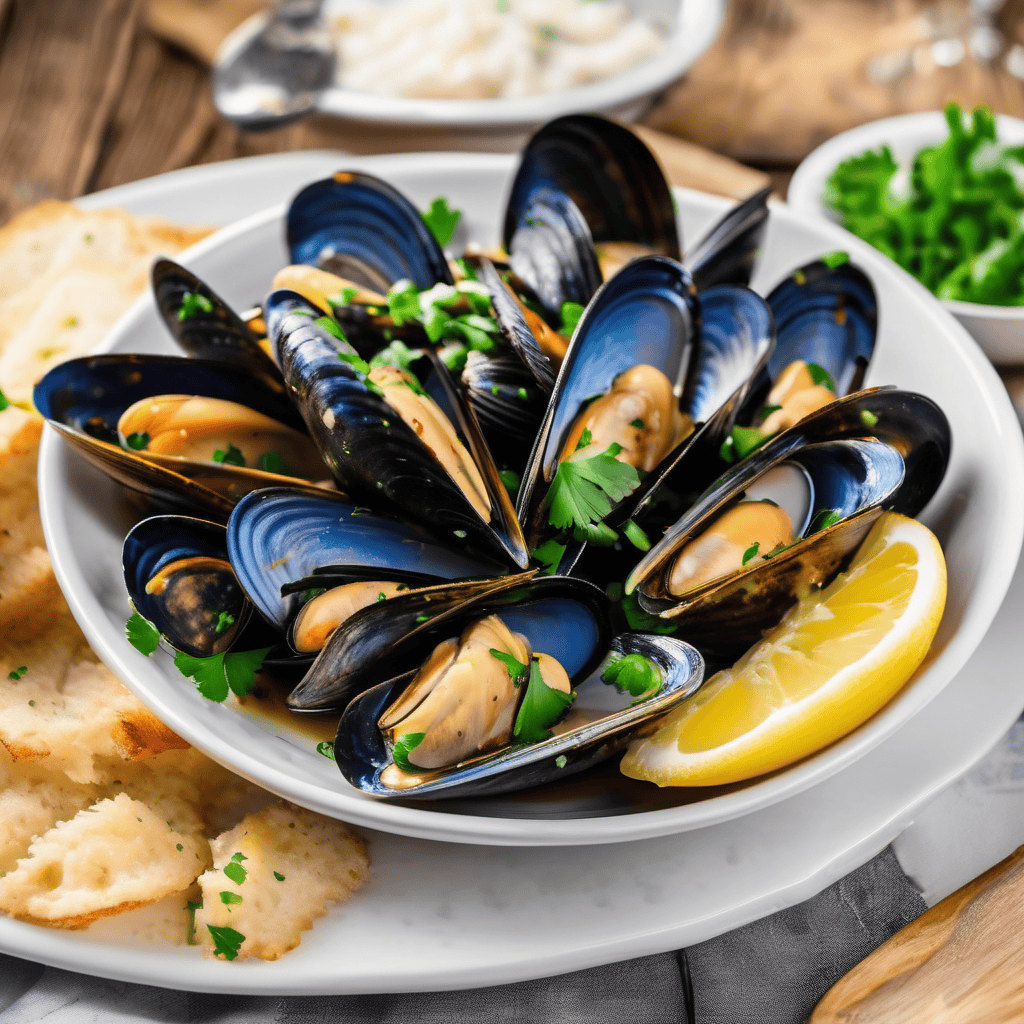
French-Inspired Dinner:
– Starter: White Wine and Leek Soup
– Main: Coq au Vin Blanc (Chicken in White Wine Sauce/picture below)
– Side: Haricots Verts Amandine (Green Beans with Almonds)
– Dessert: White Wine Sabayon with Fresh Berries
Wine used for cooking: Chardonnay
Wine pairing: A buttery Burgundian Chardonnay
Here, we’re using Chardonnay to create rich, complex flavors. The wine’s buttery notes enhance the soup’s creaminess and the depth of the Coq au Vin Blanc. Pairing with a Burgundian Chardonnay complements these flavors beautifully.

Seafood Extravaganza:
– Starter: Scallops with White Wine Butter Sauce
– Main: Seafood Risotto with White Wine and Saffron
– Side: Grilled Asparagus with White Wine Vinaigrette
– Dessert: Lemon and White Wine Sorbet (picture below)
Wine used for cooking: Sauvignon Blanc
Wine pairing: A zesty Albariño from Spain
Sauvignon Blanc’s crisp acidity and herbal notes make it perfect for seafood dishes. It cuts through the richness of the scallops and risotto while enhancing the freshness of the seafood. An Albariño pairing continues this theme with its citrusy, mineral character.
These three menus demonstrate how dry white wine can be used throughout a meal, from starters to desserts. The key is to choose a wine that complements the other flavors in your dish.
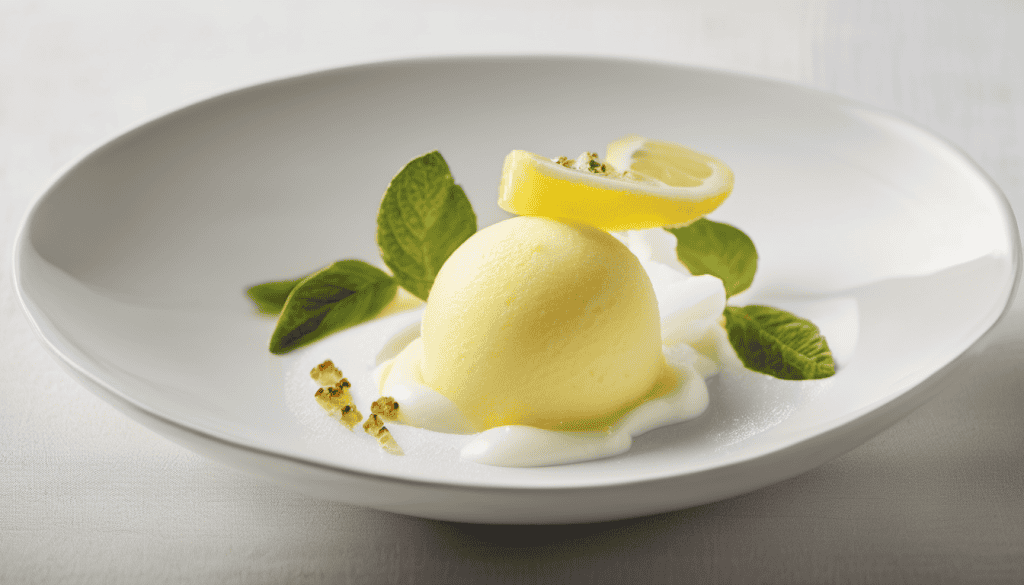
Substitutions and Alternatives
Sometimes, you might find yourself without white wine. Don’t worry – there are alternatives!
I’ve used lemon juice or white wine vinegar diluted with water in a pinch. These mimic the acidity of white wine, though they lack its complexity.
For dishes that call for a small amount of wine, like deglazing a pan, you can use chicken or vegetable broth with a splash of lemon juice.
Non-alcoholic options include verjus (the pressed juice of unripe grapes) or white grape juice mixed with vinegar.
Storing and Using Leftover Wine
Proper storage is crucial for maintaining the quality of your cooking wine. I keep unopened bottles in a cool, dark place, away from direct sunlight and heat. Storing unopened wine bottles in a dark, cool place with specific temperature and humidity requirements is essential to maintain freshness and prevent aging.
Once opened, I recork the bottle and store it in the refrigerator. White wine used for cooking can last up to a week when refrigerated. I always give it a quick sniff before using it – if it smells off, it’s best to discard it.
Creative Ways to Use Leftover Wine
Don’t let leftover wine go to waste! I love using it to make homemade vinegar or wine jelly. You can also freeze leftover wine in ice cube trays for future use in cooking.
Another fun idea is to use it in marinades. I often mix leftover white wine with herbs and garlic for a quick chicken or fish marinade.
Common Mistakes to Avoid
Through trial and error, I’ve learned to avoid these common pitfalls:
Using “cooking wine” from the grocery store. These are often poor quality and loaded with salt.
Adding too much wine. Remember, it’s meant to enhance, not overpower.
Not cooking the wine long enough. This can result in a harsh, alcoholic taste.
Using an old, oxidized wine. If it doesn’t taste good in your glass, it won’t taste good in your food.
Tips for Beginners
If you’re new to cooking with white wine, here are some tips to get you started:
Start with simple recipes that call for small amounts of wine.
Taste as you go. This helps you understand how the wine’s flavor evolves during cooking.
Experiment with different wines to find your favorites.
Remember, cooking burns off the alcohol, making the dish safe for those avoiding alcohol.
Personal Tip: To explore how to choose the right dry white wine for cooking, considering factors like flavor and acidity, I highly recommend checking the following site/article: Wine Enthusiast.

FAQ – How to use dry white wine for cooking?
1. What makes a white wine “dry”?
A dry white wine has little to no residual sugar after fermentation.
2. Can I use any white wine for cooking?
While you can, dry wines like Sauvignon Blanc and Pinot Grigio are best.
3. Does all the alcohol cook out of the wine?
Most, but not all. The longer you cook, the more alcohol evaporates.
4. Can I use white cooking wine from the supermarket?
I don’t recommend it. These often contain added salt and are of poor quality.
5. How long does opened white wine last for cooking?
When refrigerated, it takes up to a week.
6. Can I freeze leftover wine for cooking?
Yes! Freeze it in ice cube trays for easy portioning.
7. What’s a good substitute for white wine in cooking?
Chicken broth with a splash of lemon juice or white wine vinegar can work.
8. Can I use champagne or sparkling wine for cooking?
Use the “brut” type, especially in seafood dishes or light sauces.
9. Is it necessary to use expensive wine for cooking?
No, a mid-range wine ($8-$15) is perfect for cooking.
10. Can I use white wine in desserts?
Absolutely! It works well in poached fruits and some pastry creams.
11. How much wine should I use when a recipe doesn’t specify?
Start with a splash (about 1/4 cup) and adjust to taste.
12. Can I use white wine in marinades?
Yes, it’s great for tenderizing meat and adding flavor.
13. What’s the difference between cooking with red and white wine?
White wine is typically used in lighter dishes, while red wine suits heartier fare.
14. Can I use sweet white wine for cooking?
Sticking with dry wines is best unless the recipe specifically calls for sweet.
15. Is cooking with wine safe for children or pregnant women?
Most of the alcohol cooks off, but consult with a doctor if you have concerns.
Conclusion
Cooking with dry white wine is an art that can genuinely elevate your culinary creations. From selecting the right wine to mastering various cooking techniques, I hope this guide has given you the confidence to experiment in your kitchen and answered your question about “how to use dry wine for cooking.”
The three menus I’ve shared demonstrate how versatile white wine can be in cooking, enhancing flavors from appetizers to desserts.
Remember, cooking should be fun and adventurous. Don’t be afraid to try new things, and trust your palate. With practice, you’ll soon be creating restaurant-quality dishes in your own home.
Cheers to your culinary journey with dry white wine!
For your reference, the latest articles by Didi Somm include:
- Wine Fridge vs Regular Fridge: Best Advice for You
- Port Wine – Expert Guide: Discover its Rich History and Flavors
- Best White Wine for Cooking – 7 Tips from the Expert
- Best Dual Zone Wine Fridge In 2024 – The Rankings
- Wooden Wine Rack Ideas – 7 Best Solutions for You
- Wine Cabinet with Fridge: Best Expert Ideas for You
Important Notice: The information in this article is for general and public information purposes only. It solely reflects Didi Somm’s or his Staff’s opinion, and no responsibility can be assumed for errors or omissions in the service’s contents. For details, please check the Disclaimer at the bottom of the homepage.


